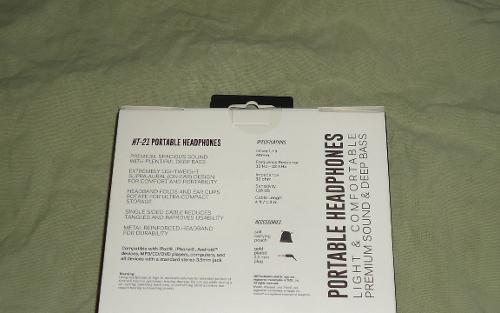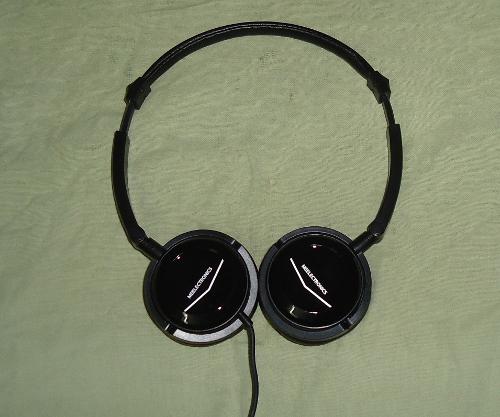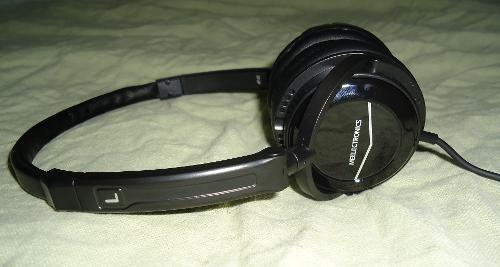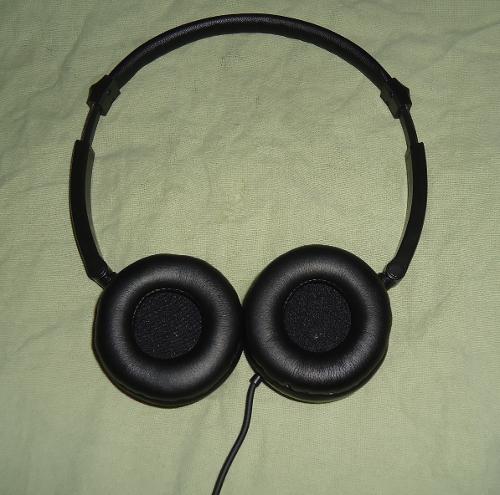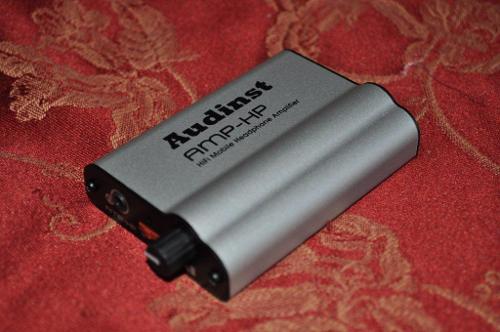Me: I am a 21 year old student living in a small town in India. I would like to call myself a music enthusiast, rather than an audiophile. I was inspired by music since childhood, and as the time passed, the passion of music grew in me, and that subsequently led me to join Head-Fi. Eventually, I found the pleasure of listening to music mainly by the HD600 and recently, by the seductive LCD2 headphones, and realized the true components of recorded music. I usually like to listen to Indian Classical Music along with Bollywood songs. My main listening genres include classical, vocal, instrumental, jazz and sometimes pop.
Intro: Shanling is a well established, but a lesser known Chinese brand specializing in the area of OEM Manufacturing & Headphone/Power Amplifiers. Shanling started operating in 1988, has come a long way since then & currently manufactures supplies parts/products for famous western audio brands.

Shanling have a specific vision in making their products: The products should have a accurate and neutral sonic performance, quality and should have a practical operating aspect. All their products are manufactured in their own factory in Shenzhen. The M3 DAP is the entry level DAP offering from Shanling. The M3 uses a modern and unique styling, design, UI and aims to capture the ears of budding music enthusiasts.
Specifications of M3:
Frequency Response: 20Hz ~ 20kHz
Total Harmonic Distortion: <0.004%
Recommended Headphone Impedance: 16 ~ 300Ω
Output power: 250mW @ 32Ω; 16mW @ 300Ω
Battery charging time: About 6 hours on 5V 2A Adapter
Battery playback time: About 7-9 hours on general plaback
Power supply: Built-in lithium polymer battery 3600mAH
Input: Line in, USB, Optical fibre
Output: Line Output, Optical fibre, Headphone out
Memory size: Inbuilt 8GB, support external TF card upto 128GB
Dimensions (W × D × H): 69 × 21 × 125.5mm
Net weight: about 220g
Can M3 compete with existing mainstream DAP’s? Lets find out,
Packaging and Accessories: The M3 arrives packed inside a plain black cardboard box, packed inside a foam packing. Packaging is minimalistic, but nothing to complain about, considering M3’s high value aspect. But I feel atleast a storage pouch and a cleaning cloth could have been provided by Shanling.


List of accessories in the box, which include the following:

USB Cable: USB to Micro USB cable for charging and data transfer.
User Manual: Contains instructions to operate the M3 and other warranty information. (Unfortunately, In Mandarin language)
Design and Build: The M3 has a excellent overall build quality. Its design is very practical, or shall I say modern. & is easy for day-today operation without any confusion or hassle. The entire housing is made up of high quality aluminium, and is painted in matt black/silver, and is resistant to fingerprints. It is rectangular in shape with smoothened edges, the M3 fairly large in size, and just appears to be smaller in pictures. It feels fairly light when held in hand.

At the front we have a analog volume knob (which is rare to see at this price point) which includes a control Joystick, a power button with embedded indicator LED. The circular knob present here, has a dual role of adjusting volume, along with control functions. For control functions, the M3 employs ‘joystick’ style movements to perform (up, down, left, right) as found in common DAP’s .Volume knob rotation is not smooth, but with step interval type ratchet mechanism. The knob has grips on its side for easy rotation. Power switch has a pretty great feel, and is very precise in its job. The LED is embedded right in the middle of the button, which gives it a really attractive look.

The display screen here is again large enough for comfortable viewing, and color/resolution on M3 is one of the best I have ever seen in DAP’s. It’s really good & better than most of the DAP’s. The screen is anti-reflective, resistant external lights, and colour output is very crisp and natural. On the top, there is a 3.5mm headphone out socket, and a reset hole. 3.5mm jack is a smooth operator, which is neither too tight nor too loose. The socket employs ball bearings instead of clips to avoid scratches/damage on the headphone jack. If we look at the bottom side, we can observe a micro SD card slot, a micro USB port, and a coaxial output, and one lineout, both in 3.5mm socket format. All these work without any hassle, and are of good quality.

On the either sides of the M3, recessed curves and recessions in the main body for a comfortable grip for hands (very much like the QA360)

Sound: The M3 in has a very ‘clear’ and ‘detailed’ sonic character. ‘Accurate presentation’ is the key word. In my view, it is essential for a source to be as neutral and as accurate as possible for an optimal sound quality.
Burn in: The M3 audibly improves with time. Let’s say a playback of 100 hours provides few audible improvements, Bass prior to break-in is quite sterile, and eventually it becomes more in body. Mids will sound more open, airy and natural. highs become slightly more clean, soundstage will open up by a margin. DAP’s are known to slightly change their final sonic impressions by using different SD cards. In my case, I have found: Sandisk memory cards provided a slightly rich sound, whereas Lexar’s sounded audibly more detailed and analytical, so that made me choose Lexar card for M3 for best possible neutrality.
Driving Power: There is gain setting Low/High, which if switched, provides an high gain (ideal for demanding cans). Else, will provide a low gain (ideal for low impedance dynamic cans & IEM’s) The M3 has 60 step volume knob, which is quite accurate and precise. I hardly ever cross ‘30’ volume. I can say, this DAP is very powerful when it comes to output power, and can drive demanding cans in low gain itself. The M3 is also audibly dead silent on any give gain and volume pot. It is also totally immune to EMF and other such disturbances.
Lows: are accurate, tight and refined; have a good impact. Depth & extension are really good.
Mids: sound very neutral, clean and airy. Mids are neither forward nor recessed, and are just about the neutral line.
Highs: Very clear and detailed treble with very less grains.
Soundstage: Soundstage is airy, precise and circular. Depth is excellent. Instrument separation & detailing is appreciable. I really liked the way M3 picked out the details.
The M3 portrays music as it was recorded. The M3 is very transparent and neutral in nature. Faulty recordings are not forgiven, and are immediately picked out by the M3. I am fully satisfied by the performance given out by M3, as I firmly believe, sources should be as transparent as possible, and M3 wins in that. Due to its transparency and neutrality, M3 does not sound organic, natural or lifelike. But inturn it sounds like a very detailed & accurate high fidelity DAP.
The M3 can also act as a USB DAC and can give multiple outputs. Performance as DAC is also pretty good, but as expected, performance is not upto mark as compared to dedicated standalone DAC’s. The M3 can also accept input from Line in, SPDIF (hence act as amplifier/interface) I find the M3 DAP is really versatile.
Battery & UI: Battery life on M3 DAP is quite decent, with about average 5-6 hours general playback. Absolutely no heat detected when charging or during playback. But charging time is quite long, (at about 6 hours) even by using a 5V 2A adapter as recommended by Shanling. User Interface is actually very modern, fast, and appealing for our eyes. The UI has all basic and convenience general features. Though there are small bugs here n there, which I believe will be solved by Shanling in upcoming days.

In M3, the control buttons are made to work by operating the joystick/volume knob. Flip it up/down/left/right, and the functions are the same up/down/left/right. The select or ‘centre’ key as we might say it, is not present in M3 DAP unlike other DAP’s. So, the implementation here is: Right key alternatively acts as play/pause, with Left key as back/menu, Up and down keys as scrolling and fast forward and rewind. Actually UI & button layout it’s pretty simple, yet very advanced functional layout, which I quite like. With M3, Shanling has definitely rolled out a very unique, modern yet practical design, which is simple to operate for everyone alike.
The M3 has gain setting, pitch or tone settings, and a software controlled rate upsampling. Ultimately the M3 has an edge over DAP’s to be tried in 300$.
Conclusion: I feel the M3 is a phenomenal DAP in my view. It offers an amazing neutral sound quality, and employs cutting edge design, modern UI and a very neat and easy controls. Build quality is very good, sonic presentation is neutral, transparent, detailed. It can fairly drive any cans upto 300 ohms. I can whole heartedly recommend M3 for any enthusiast who would prefer a very neutral, clean, sonic presentation. I very much prefer M3 over X5 & DX90, making M3 my favourite DAP next to QA360.
Pros:
1) Build Quality: The M3 has a very good all-metal build. No compromise to be seen anywhere in exterior. Analogue volume control is an added bonus.
2) Sound quality: Sound presentation here is very neutral, transparent, detailed and spacious, very much appreciable for becoming a good source, which is the base of sonic chain. Probably the most performing DAP in 300$
3) Driving Power: M3 DAP is very powerful when it comes to output power, and it can comfortably drive even power hungry cans to insanely loud volumes. Also, the noise floor is very low, and is audibly silent. Good job!
4) UI, Display & Controls: This where M3 stands out from rest. M3’s display is simply one of the best I have seen DAP’s. Its vivid and deep colour presentation and low brightness capability has impressed me. UI is very much user-friendly, easy on battery, doesn’t warm up. For controls, M3 has just one joystick, from which user can operate the entire DAP. No need to lift fingers at all.
Cons:
1) Battery charging time: Actually not really a con, Infact this issue is common with many DAP’s. The charging time (full) taken by M3 is about 6 hours. Which can be really irritating for enthusiasts who listen for a long session or while in travel.







































































